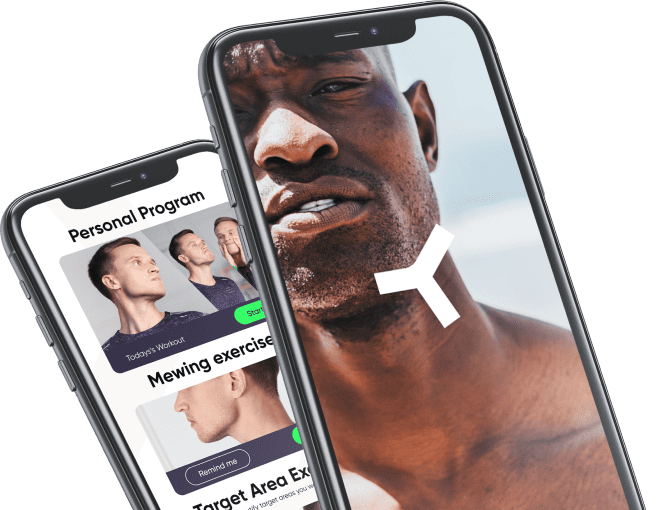If you’ve seen people debate “PSL ratings” and wondered what the fuss is about, you’re not alone. PSL stands for Perceived Sexual Market Value—a way some communities try to quantify facial attractiveness on a scale (commonly 0–8). The internet can make this feel harsh, but here’s the empowering twist: when you understand what PSL measures, you can improve the very factors it evaluates—naturally and safely.
🔍 Curious how your PSL score ranks?
Take our free 60-second test to discover your facial strengths and learn what’s holding you back.
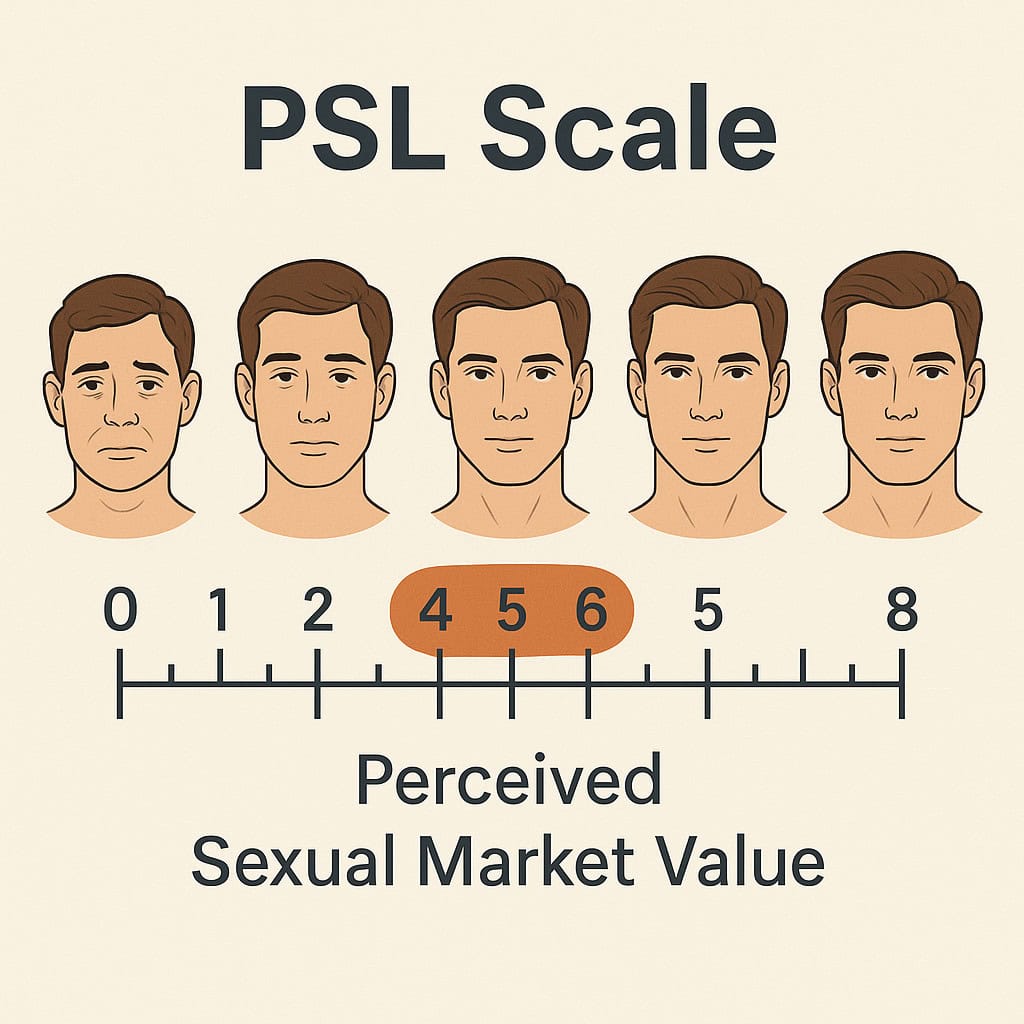
Speaking as an orthodontics-informed face-yoga practitioner, my goal is to help you decode PSL in simple, science-informed language—and then show you what to do about it.
What Exactly Is the PSL Scale?
PSL grew out of online looks-maximization forums as an attempt to assess facial appeal more “objectively” than the casual 1–10 scale. In practice, PSL uses a normal distribution mindset:
- 4 PSL ≈ Average: where most people naturally cluster.
- 5–6 PSL = Above Average to Attractive: features are generally balanced with a few strong assets.
- 7+ PSL = Elite/Model-Level: exceptional harmony and standout traits; rare in the general population.
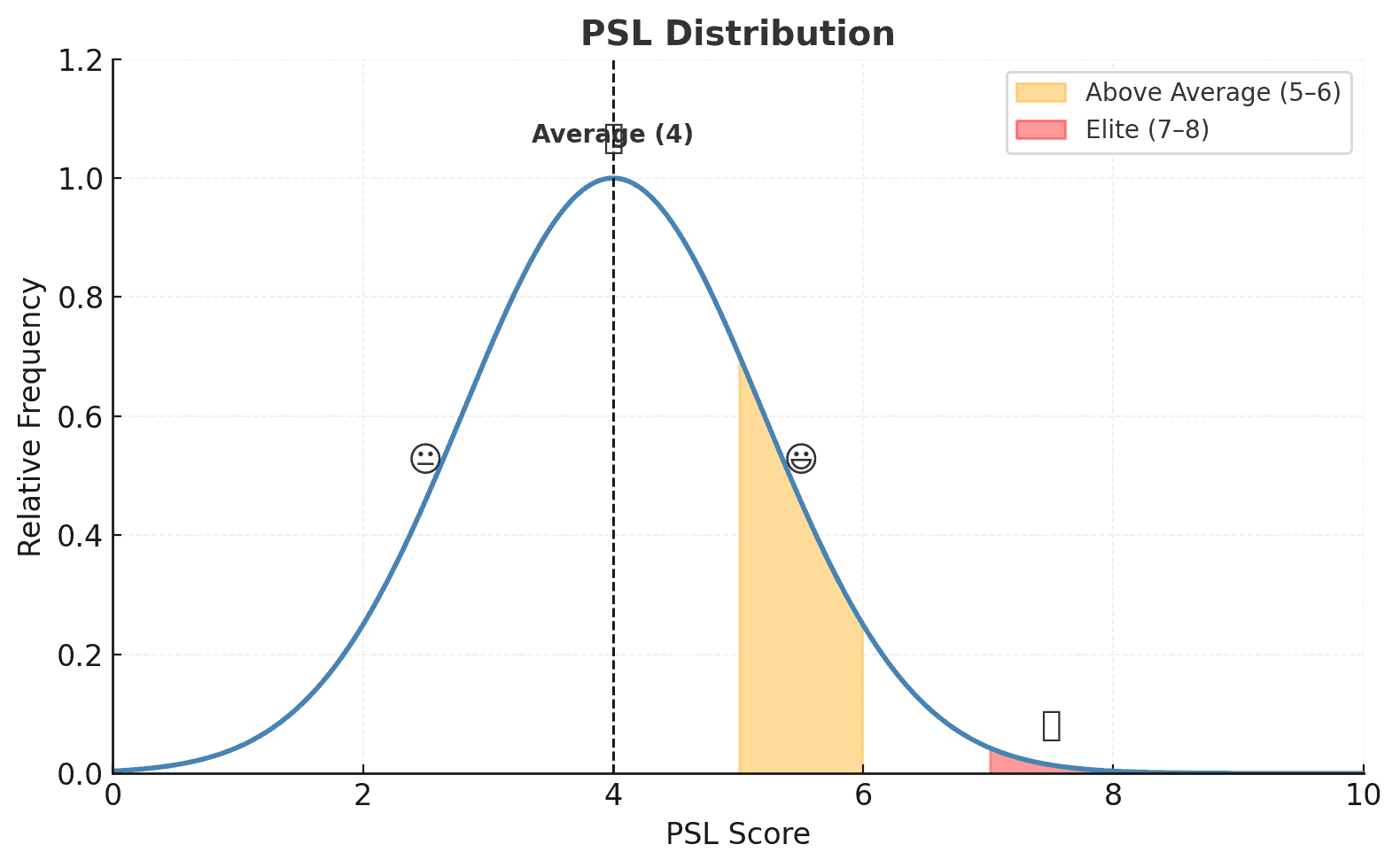
Whether you agree with PSL or not, its criteria are useful because they align with long-standing research on what humans tend to notice in faces. That means you can approach PSL as a progress map: identify your current strengths, find your biggest bottlenecks, and improve them with smart, natural strategies.
The Science of Attractiveness: What PSL Really Measures
While PSL is an internet-born scale, many of its levers overlap with robust findings from facial-attractiveness research. Here are the pillars to understand:
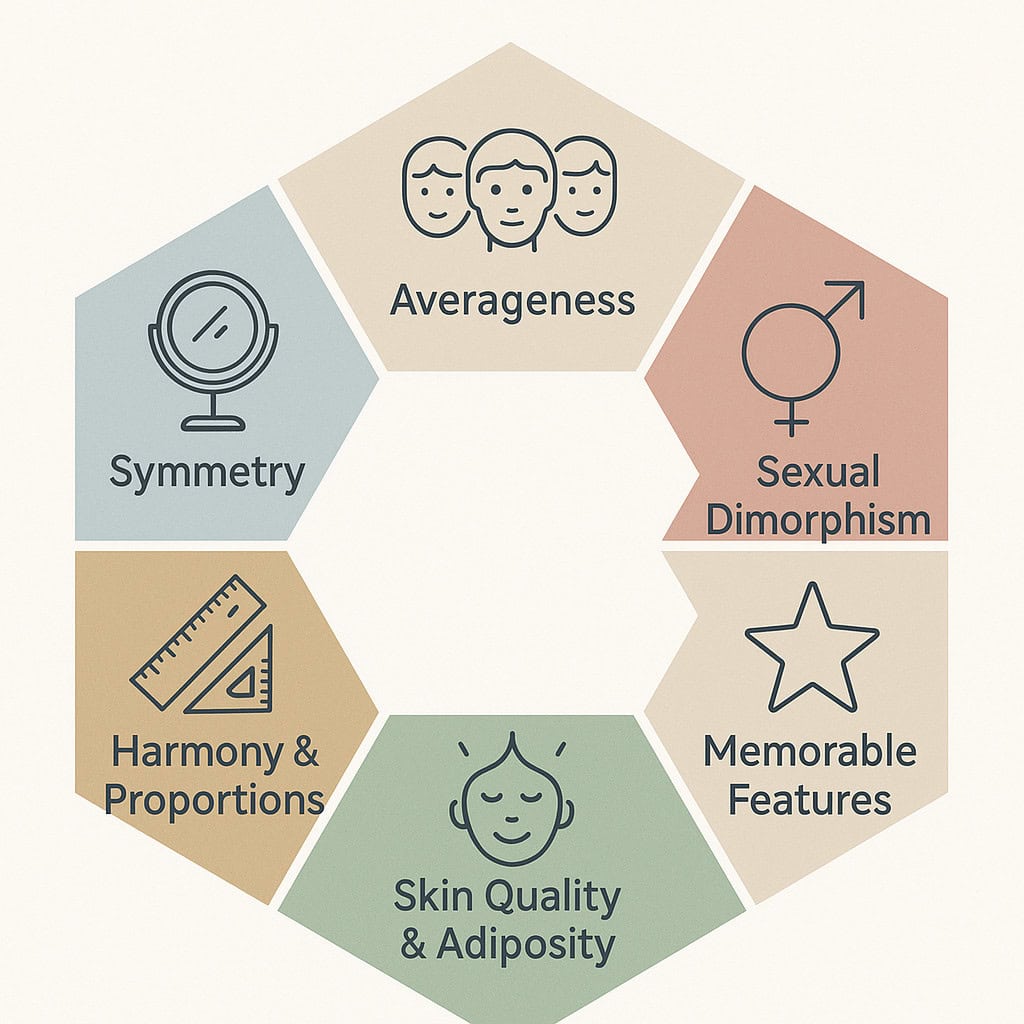
1) Symmetry
Across many studies, more symmetrical faces are rated as more attractive. Minor asymmetries are normal; extreme imbalances can reduce perceived harmony. (See referrals below.)
2) Averageness
Faces that sit closer to the population average often score higher. “Average” doesn’t mean bland—rather, it suggests developmental stability and an absence of extreme outliers.
3) Sexual Dimorphism
Traits that emphasize sex-typical features—e.g., stronger jaw/brow cues in males, softer contours in females—tend to be preferred. This is context-dependent and moderated by culture and individual preference, but it reliably shows up in the literature.
4) Facial Harmony & Proportions
How well do features fit together? The jaw, cheekbones, nose, and eyes should form a balanced whole. For example, your lower-face angle (the gonial angle) affects how “structured” your jawline appears. Learn more about harmony and structure in this deep-dive on the gonial angle.
5) Skin Quality & Facial Adiposity (Fat)
Even skin tone and lower facial adiposity (i.e., less “puffiness”) are strongly associated with higher attractiveness. If facial fat obscures your bone structure, your score may sit lower than your skeletal potential suggests.
6) Memorable Features
Standout traits can lift a face above “average”—for example, longer palpebral fissures or a deeper-set, horizontally long eye shape (often dubbed “hunter eyes” in communities). If you’re curious, read the guide on hunter eyes. Hollowing under the cheekbones can also accentuate structure; see how to get hollow cheeks.
Note: PSL typically evaluates neutral or resting-face photos, while real-life attraction also includes expression, voice, presence, and behavior. That’s why a number is only a starting point—not the full story.
How to Estimate Your Own PSL (A Calm, Honest Self-Check)
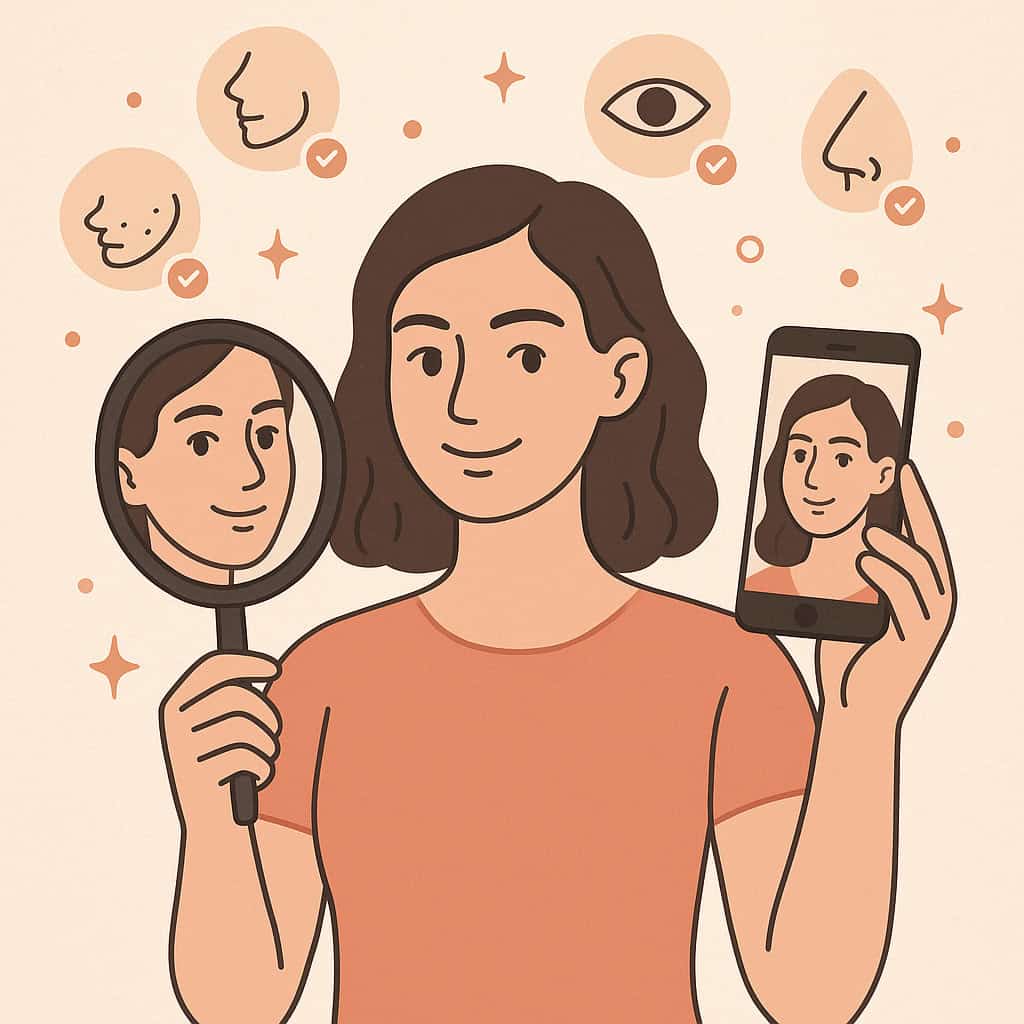
Think of this as a quick health check—not a verdict on your worth.
- Mirror / Photo Test: In a well-lit, straight-on photo, do any features jump out as extremely out of proportion or asymmetrical? If not, you’re likely around the middle (≈4) or above.
- Feature-by-Feature Review:
- Eyes: Are they balanced, with good lid show?
- Nose: Does it harmonize with the rest of your face, or dominate?
- Jawline & Chin: Is the jawline defined? Is the chin recessed or well-projected?
- Cheekbones: Are they visible and supportive, or flat?
- Skin & Evenness: Is your skin relatively clear and even-toned, or inflamed and dull?
- Flag Your Bottlenecks: Identify your top 1–2 weak points (e.g., facial fat, posture, skin). This primer on unattractive facial features can help you spot what’s holding you back.
- Make It Easy: Prefer a guided experience? Take the free PSL test below.
Free PSL Test: Get Your Personalized Score & Plan
Reading is helpful—measuring is transformative. The Free PSL Test is designed to evaluate your current PSL and give you a practical roadmap. Here’s how it works:
- Structured Questions: You’ll answer concise items about visible traits (jawline, cheekbones, eye area, symmetry), skin clarity, and facial leanness.
- Evidence-Informed Scoring: Your responses are mapped to PSL tiers using weighting that mirrors widely-cited pillars (symmetry, averageness, sexual dimorphism, harmony, and adiposity).
- Clear Output: You’ll get a PSL estimate (as a range), plus a strengths/weaknesses profile—e.g., “good mid-face support; extra facial fat is masking jaw definition.”
- Personal Training Program: Instantly receive a tailored, natural plan (mewing, posture cues, chewing protocols, skincare basics, body-composition targets) to help you sculpt your face and raise your score.
Rate your facial aesthetics using a self-assessment slider. All fields are required. Your result appears at the end.
Gain at Least +2 PSL Points with Our Workout Plan
Real progress is achievable — and it doesn’t take surgery or luck.
Examples below show the kind of improvement our users experience after following their personalized Mewing.coach face workout plan: sharper jawline, better symmetry, and naturally enhanced facial harmony.
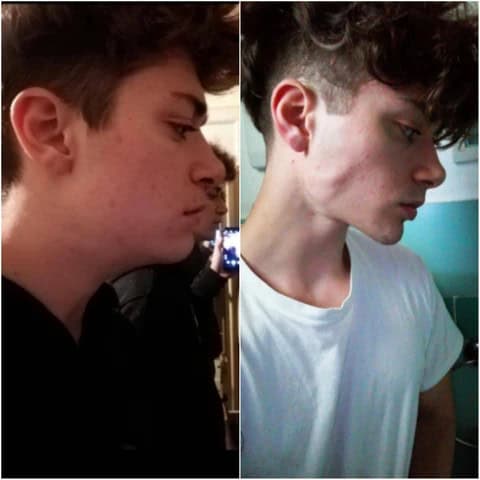
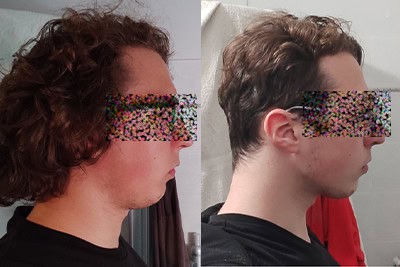

Your plan is fully customized to your current features, combining mewing, posture training, and targeted facial exercises that gradually sculpt your face.
💡 Start your own transformation today — click the button below to get your personalized plan.
Good News: Your PSL Is Not Fixed
Genetics set a baseline; habits shape the reveal. If you know where to focus, you can create visible changes—without surgery or big budgets.
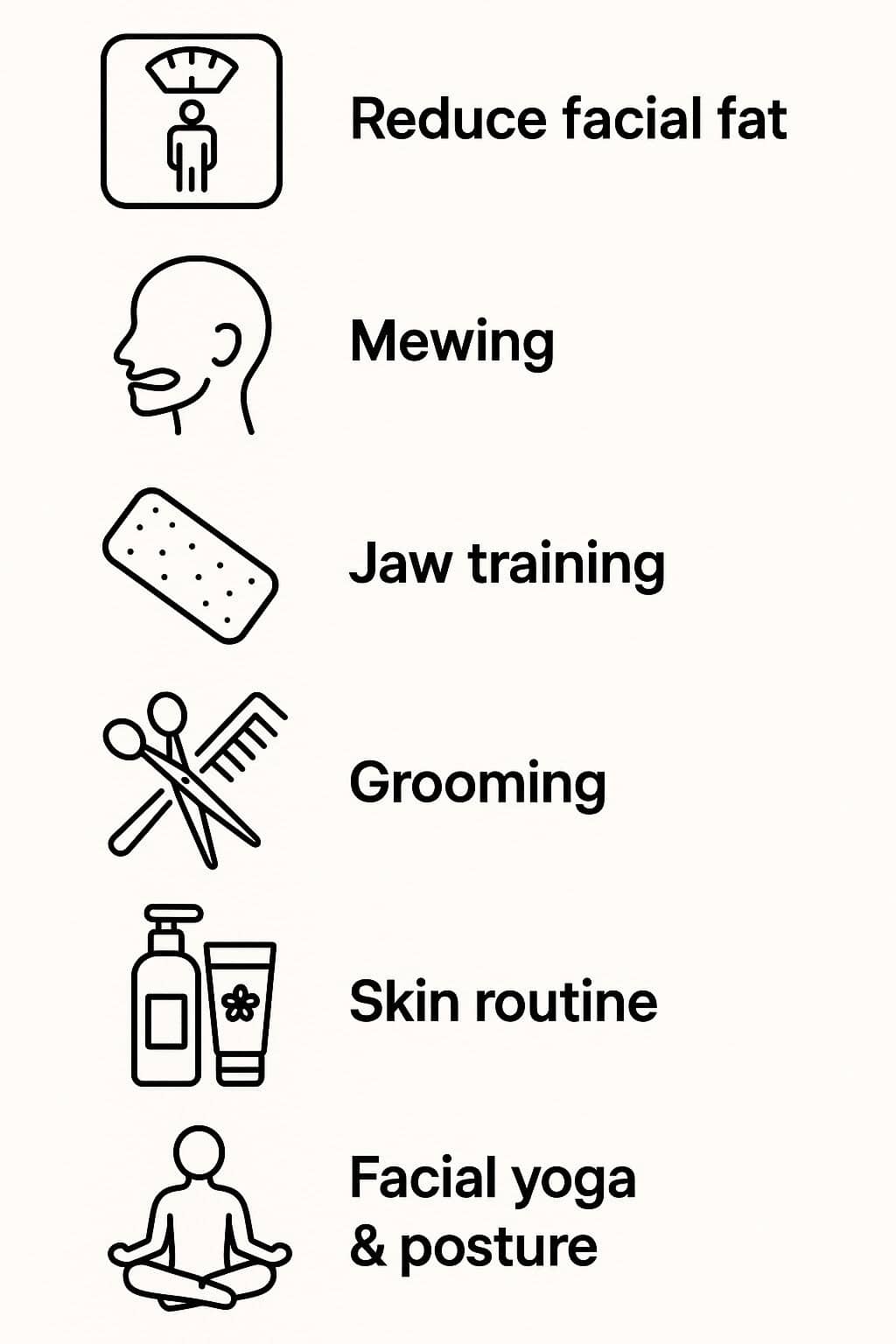
1) Reduce Facial Adiposity (Safely)
Losing even a modest amount of body fat can noticeably sharpen your jawline and reveal cheekbones. Explore how body fat interacts with facial definition: jawline vs. body fat percentage and fat face, skinny body.
2) Correct Oral & Facial Posture (Mewing)
Mewing means resting your entire tongue on the palate, lips sealed, and nasal breathing—consistently. Over time, this supports better mid-face mechanics and jawline muscle tone. Get step-by-step instruction in the complete mewing how-to guide.
3) Train the Jaw Muscles (Safely)
Chewing (e.g., sugar-free gum; progressively firmer options with caution) can hypertrophy the masseter muscles to increase visual jaw definition. Avoid overuse—consistency beats intensity.
4) Strategic Grooming
Right haircut, facial hair (for men), brows, and basic contouring (for women) can shift perceived symmetry and highlight best features immediately. Small tweaks often deliver outsized returns.
5) Skincare & Neck/Under-Chin Care
Clear, even skin can lift perceived attractiveness significantly. Build a minimalist routine (cleanser, moisturizer, sunscreen). If the submental area bothers you, try these natural ways to tighten skin under the chin.
6) Facial Yoga, Expression & Posture
Consistent facial exercises can improve tone and vitality. Pair that with an open, confident posture and a genuine smile—PSL scores ignore expression, but real life doesn’t.
For a comprehensive overview of safe, natural strategies, explore our guide to looksmaxing.
From Numbers to Progress
Stop chasing a “perfect” score. Focus on progress. Moving from an average tier to a slightly-above-average tier can change how people see you—and how you see yourself. Each small gain compounds: clearer skin, better posture, leaner face, stronger jawline, more confident expression.
Ready to turn insight into results? Take a free quiz below and get:
- Guided video lessons for mewing and facial exercises
- Progress tracking with photo comparisons, reminders, and streaks
- Customized routines tailored to your unique facial profile
Think of it as a personal trainer for your face—always in your pocket.
Referrals (Research & Background Reading)
-
- Rhodes, G. (2006). The evolutionary psychology of facial beauty. Annual Review of Psychology, 57, 199–226. PubMed | Annual Reviews
- Little, A. C., Jones, B. C., & DeBruine, L. M. (2011). Facial attractiveness: evolutionary based research. Philosophical Transactions of the Royal Society B, 366(1571), 1638–1659. Journal page | PDF
- Foo, Y. Z., Simmons, L. W., & Rhodes, G. (2017). Predictors of facial attractiveness and health in humans. Scientific Reports, 7, 39731. Nature | PubMed
- Facial Adiposity, Attractiveness, and Health: A Review (2018). Frontiers in Psychology. (Synthesizes links between facial fat, perceived health, and attractiveness.) NIH/PMC
- Perrett, D. I., et al. (1998). Effects of sexual dimorphism on facial attractiveness. Proceedings of the Royal Society B. PubMed
- Alam, M., et al. (2018). Association of facial exercise with the appearance of aging. JAMA Dermatology, 154(3), 365–367. PubMed
Note: Nothing in this article is medical advice. If you have concerns about your bite, breathing, or jaw function, consult a qualified clinician.



